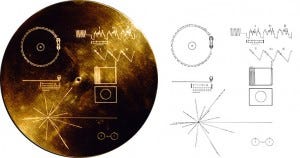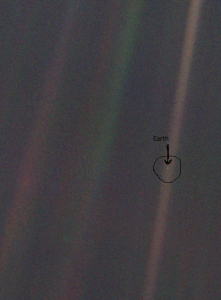Voyager Missions: Exploring the Final Frontier of Space
Written on
Introduction to the Voyager Missions
In recent days, the remarkable story of humanity's furthest and longest-serving spacecraft—Voyager 1 and Voyager 2—has resurfaced for two significant reasons: it would have been Carl Sagan’s 85th birthday on November 9 and Voyager 2 has made a noteworthy discovery.
To understand their significance, we must first revisit the inception of the Voyager missions. In 1977, just eight years after the historic moon landing, two robotic probes, Voyager 1 and Voyager 2, were launched. Their primary objective was to explore the planetary systems of Jupiter and Saturn. These missions led to groundbreaking findings, including the discovery of active volcanoes on Jupiter's moon Io and the presence of liquid-water oceans beneath the icy surface of Europa. The missions also revealed the intricate structures of Saturn's rings and provided critical data about its moon Titan. This wealth of information paved the way for subsequent missions to these distant worlds.
The Voyagers' journey continued well beyond their initial mission. After extending their missions three times, over 42 years later, these resilient spacecraft are still transmitting valuable data back to Earth. Their ongoing mission, known as the Voyager Interstellar Mission (VIM), aims to push NASA's exploration efforts to the farthest reaches of our solar system and possibly beyond.
Voyager 1's Journey into Interstellar Space
Voyager 1 began its trek out of the Solar System in 1980, successfully crossing the heliosphere in 2012—making it the third spacecraft to enter interstellar space, following the Pioneer missions. As of November 4, 2019, Voyager 1 remains in contact with Earth from a staggering distance of 147.380 AU (22.0 billion kilometers; 13.7 billion miles), establishing itself as the most distant human-made object in existence.
Voyager 2, meanwhile, took a different path, venturing to Uranus and Neptune—the only spacecraft to have explored these outer planets. It reached Neptune in 1989, where it discovered six new moons, photographed its rings, and documented a significant storm in the planet's southern hemisphere. After completing its mission, Voyager 2 entered interstellar space on November 5, 2018, and, as of November 4, 2019, it was positioned 122 AU (1.83 × 10^10 km) from the Sun, traveling at a speed of 15.341 km/s (55,230 km/h).
Understanding Cosmic Interactions
Both Voyager spacecraft have provided invaluable insights into the Sun's interaction with the surrounding space, delivering the first direct measurements of plasma density and temperature within the heliosphere and the interstellar region. Voyager 1's findings revealed that the plasma in local interstellar space is considerably denser than that within the heliosphere, suggesting it is being compressed. In November 2019, five significant research papers were published analyzing data from Voyager 2, confirming the temperature of interstellar plasma is colder than that of the heliosphere, yet warmer than anticipated—a further indication of compression.
Voyager 1 and Voyager 2 also observed particle leakage across the heliopause. As described by Edward Stone, the project scientist for the Voyager program, Voyager 1 recorded high-energy cosmic rays before crossing the heliopause, indicating a connection from the outside in. Conversely, Voyager 2 detected an influx of low-energy particles from the heliosphere into interstellar space, demonstrating a flow from inside out. This illustrates a fascinating dynamic at play around the heliopause, suggesting a complex interaction between the two regions.
The Role of Technology and Future Prospects
Both spacecraft continue to transmit signals that take approximately 16 hours to reach Earth, utilizing technology from the 1970s and a 12-watt transmitter—similar to the power of a typical refrigerator bulb. The extended mission is anticipated to last until 2025, when the radioisotope thermoelectric generators will likely no longer have sufficient power for scientific operations. Nevertheless, even after losing contact, the Voyagers will continue on their journey, possibly for billions of years.
A Tribute to Carl Sagan
This discussion naturally leads to Carl Sagan Day, celebrated on November 9, which marks Sagan's birthday. Each Voyager is equipped with a Golden Record containing sounds, images, music, and messages from Earth, along with a pulsar map to guide any extraterrestrial civilization that might discover the probes. The Golden Records were conceptualized by Sagan, who played a pivotal role in their creation. He famously stated, “The spacecraft will be encountered and the record played only if there are advanced space-faring civilizations in interstellar space, but the launching of this ‘bottle’ into the cosmic ‘ocean’ says something very hopeful about life on this planet.”

A notable moment in Voyager history occurred on February 14, 1990, when Voyager 1 captured a photograph of Earth from about 6 billion kilometers away. At that time, as it was exiting the Solar System, Sagan urged NASA to turn the spacecraft around for one last image of our planet, resulting in the iconic "Pale Blue Dot" photograph. Sagan eloquently summarized this moment in his book, reminding us of the fragility and unity of life on Earth.

Voyager 1 Trajectory through the Solar System
The first video titled "Voyager 1 Trajectory through the Solar System" explores the remarkable journey of Voyager 1 as it travels through our solar system, detailing its path and discoveries along the way.
Voyager at 45: NASA's Longest and Farthest Explorers (Live Q&A)
The second video titled "Voyager at 45: NASA's Longest and Farthest Explorers (Live Q&A)" features a discussion about the Voyager missions, celebrating their legacy and the insights they have provided over the decades.